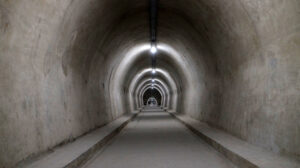Rita Wilson penned this article several years ago and immediately went viral among the Greek community from around the world. The passage talks about Wilson’s Greek heritage that she often refers to. In fact, she’s even managed to turn actor Tom Hanks into a full-blooded Greek.
Once every few years, Greek Easter falls the same week as “American Easter,” as it was called when I was growing up.
In order for “Greek Easter” to be celebrated the same week as “American Easter,” Passover has to have been celebrated already. We Greeks don’t do Easter until after Passover, because how can you have Easter BEFORE Passover. Jesus went to Jerusalem to celebrate Passover, after all. Unless it is one of the years when the two holidays align.
Here are some of the things that non-Greeks may not know about Greek Easter: We don’t do bunnies. We don’t do chocolate. We don’t do pastels.
We do lamb, sweet cookies, and deep red. The lamb is roasted and not chocolate, the sweet cookies are called Koulourakia and are twisted like a braid, and our Easter eggs are dyed one color only: blood red. There is no Easter Egg hunt. There is a game in which you crack your red egg against someone else’s red egg hoping to have the strongest egg, which would indicate you getting a lot of good luck.
Holy Week, for a Greek Orthodox, means you clear your calendar, you don’t make plans for that week at all because you will be in church every day, and you fast. Last year, in addition to not eating red meat and dairy before communion, my family also gave up sodas for the 40-day Lenten period.
During one particularly stressful moment, there were many phone calls amongst our kids as to whether or not a canned drink called TING, made with grapefruit juice and carbonated water was, in fact, a soda and not a juice, which our then 10-year-old decided it was, so we had a Ting-less Lent.
No matter where I find my self in the world I never miss Easter, or as we call it, Pascha. I have celebrated in Paris, London, New York City, Los Angeles, and in Salinas, California at a small humble church that was pure and simple.
When we were kids, our parents would take us, and now as parents ourselves we take our children to many of the Holy Week services including the Good Friday service where you mourn the death of Jesus by walking up to the Epitaphio, which reperesents the dead body of Christ, make your cross, kiss the Epitaphio, and marvel at how it was decorated with a thousand glorious flowers, rose petals and smells like incense.
Some very pious people will crawl under the Epitaphio. I have always been so moved to see this. There is no self- consciousness in this utter act of faith. There is no embarrassment to show symbolic sorrow at the death of our Saviour.
At a certain point in the Good Friday service, the Epitaphio is carried outside by the deacons of the church, as if they are pall bearers, followed by worshippers carrying lit candles protected from dripping on your clothes and on others by having a red plastic cup that sits below the flame to catch the wax drippings. Every Greek person knows all too well the smell of burning hair.
One time, in London, I smelled something and turned to look at where the smell might be coming from, only to be horrified that it was coming form me and my head was on fire. But I digress.
It is somber and quiet as we follow the Epitaphio, in candlelight, from the altar to the outdoors, in order for it to circle the church before it returns back to the altar. We sing beautiful lamentations that make your heart break with their pure expression of sadness and hope.
One of my favorite services during Easter is Holy Unction. This happens on the Wednesday of Holy Week. Holy Unction is a sacrament. It is for healing of our ills, physical and spiritual. It is preparing us for confession and communion. This sacrament has always been so humbling to me.
When you approach the priest for Holy Unction, you bow your head and as he says a prayer and asks you your Christian name, he takes a swab of blessed oil and makes the sign of the cross on your forehead, cheeks, chin, backs of your hands and palms. It is a powerful reminder of how, with faith, we can be healed in many ways.
The holy oil is then carefully dabbed with cotton balls provided by the church so you don’t leave there looking as if you’re ready to fry chicken with your face, and before you exit the church, you leave your cotton balls in a basket being held by altar boys, so as not to dispose of the holy oil in a less than holy place. The church burns the used cotton balls.
There have been times when I have left church with my cotton ball and have panicked when I am driving away. At home I take care of it. Imagine a grown woman burning cotton balls in her sink. But that is what I do.
Midnight Mass on Saturday night, going into Sunday morning is the Anastasi service. We will arrive at church at around 11 p.m., when it starts, and listen to the chanter as he chants in preparation for the service. My kids, dressed in their suits and having been awakened from a deep sleep to come to church, groggily sit and wait holding their candles with red cup wax catchers.
As the service progresses, the moment we have all been waiting for approaches. All the lights in the church are turned off. It is pitch black It is dead quiet. The priest takes one candle and lights his one candle from the one remaining lit altar candle, which represents the light of Christ’s love ( I believe).
From this one candle, the priest approaches the congregation and using his one candle he shares his light with a few people in the front pews. They in turn share their light with the people next to them and behind them. In quiet solemnity, we wait until the entire church is lit with only the light of candles, the light that has been created by one small flame has now created a room of shared light.
And at a moment that can only be described as glorious, the priest cries out, “Xristos Anesti!” “Christ is Risen!” We respond with “Alithos Anesti!” “Truly, He is Risen!” We sing our glorious Xristos Anesti song with the choir. That moment, which happens about an hour, to an hour and half into the service and seems as if the service is over, actually marks the beginning of the service. The service then continues for another hour and a half.
When I was a kid, after the service was over, we would go to the Anastasi Dinner that the church would throw in the church hall, where we would break our fast, drink Cokes at 2:30 in the morning, dance to a raucous Greek band and not go home until our stomachs were full of lamb, eggs, Koulouraki, and we saw the sun rise. Or was it the Son rise?
But usually now, after Midnight Mass, we drive home with our still-lit candles. I always love seeing the looks on peoples faces as they pull up to our car seeing a family with lit candles calmly moving at 65 m.p.h. down the highway. When we get home, we crack eggs, eat cookies, drink hot chocolate (so not Greek) and I burn a cross into our doorways with the carbon from the candle smoke to bless our house for the year.
There have been many times when painters touching up the house have wondered why there was this strange black cross burned into our doorways. The next day is usually followed by a late sleep in, then getting up and doing the same thing you just did but in the daytime at the Easter Picnic, usually held at a local park.
I have to say, the Greeks know how to do Easter. Make no mistake. This is the most important holiday in our church. It is a beautiful week. I haven’t even begun to touch on what the week is really like. This is a sampling of a sampling of what it is like. It is so much more deep, so much richer than I have written here.
But one thing is clear. It is a powerful, beautiful, mysterious, humbling, healing and moving week. It is filled with tradition and ritual. It is about renewal and faith. And even though it is still too early to say, Xristos Anesti! Alithos Anesti!
Ask me anything
Explore related questions






